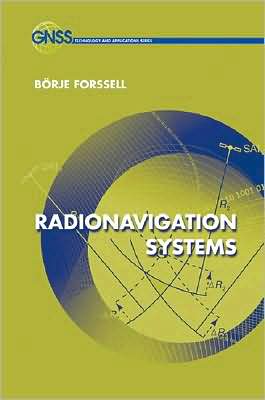

 |

|

Sold Out
Book Categories |
Preface xiii
Terrestrial systems 1
The fundamentals of terrestrial navigation 3
The shape of the earth 3
Maps and coordinate systems/Datum 6
Distances and directions on the surface of the earth 13
Great circle course on a spherical earth 13
Loxodrome course 15
Distances and directions on an ellipsoidal earth 16
Error calculations 19
Lines of position 19
Errors in lines of position 19
The geometrical influence on two-dimensional position errors 21
Errors in measurements of distance and distance differences 21
Distance measurements 21
Measurements of distance differences 23
Error ellipses 30
Distance measurement error ellipses 35
Error ellipses for a hyperbolic navigation system 37
Accuracies 40
Two-dimensional position determination by means of more than two LOPs 45
Wave propagation 46
Free space propagation 46
Reflection from surroundings 48
The ground wave 52
Tropospheric influence 57
Ionospheric influence 61
System descriptions 69
Hyperbolic systems 69
Introduction 69
General 69
Phase measurements 70
OMEGA 73
General 73
Signal format 73
Wave propagation at VLF 76
General 76
Conditions in the lower part of the ionosphere 81
The directional dependence of the reflection coefficient of the ionosphere 83
Influence of the earth and the solution of the wave equations 85
Receivers 87
Transmitters 88
Accuracy 88
Differential OMEGA 91
Prospects 95
DECCA 96
Introduction 96
Frequencies 96
Receivers 97
Transmitter stations 105
Maps and corrections of the measurement result 107
Accuracy and coverage 107
Perspectives 112
LORAN-C 114
General 114
Signal format 115
Interference and use of pulse groups 118
Coded pulse groups 122
Receivers 123
Grouping of pulses for automatic search 131
Transmitters 136
Accuracy and range 138
Differential LORAN-C 140
Prospects 143
Direction finding 146
Introduction 146
Frequencies and transmitters 147
Directivity 148
Receiver antennae 149
Antennae for improved accuracy 154
The Adcock antenna 154
Doppler direction finders 156
Accuracies 158
Aircraft systems 160
Introduction 160
VOR 162
Operation 162
The receiver 163
Doppler VOR 164
DME 166
Principles of operation 166
Search procedure 167
The transponder 169
Accuracies/Use 170
DME/P 170
ILS 175
System principles 175
Markers 176
Angular information 177
Accuracy/Sources of error 180
MLS 182
Introduction 182
TRSB angular information 183
The data message 188
Use 188
Accuracies and coverage 188
Costs and perspectives 191
Satellite systems 193
Satellite orbits and geometry 195
Introduction 195
Kepler's laws 195
Distortion of the orbit 196
Coordinate systems 198
Satellite navigation principles 204
Frequency measurements 204
Time measurements 206
Measurement principles 206
Error calculations 209
Error sources 209
The geometrical influence on the accuracy 214
Frequency measurements 214
Time measurements 217
Calculation of geometrical dilution of position 217
System descriptions 225
TRANSIT 225
Introduction 225
The satellites 225
Navigation principles 229
Satellite signals 229
Position measurements 232
The receiver 235
The use of two carrier frequencies 242
The iteration procedure 244
Accuracy 245
Translocation 247
Fields of utilization/future 249
Spread spectrum: coding of satellite signals 250
Introduction 250
Spread spectrum 251
Principles 251
Spreading functions 252
The correlation function 254
Generation of the codes (spreading functions) 258
The receiver 261
Spread spectrum in NAVSTAR/GPS 267
Navstar/GPS 272
Introduction 272
Satellite orbits 272
The satellites 276
The control segment 278
The navigation message 281
Introduction 281
TLM and HOW 281
Data block 1 281
Clock corrections 284
Age of data/group delay 284
Corrections of ionospheric delays 286
Data block 2 287
Introduction 287
Parameter representation selection 289
Data block 3 292
Receivers 293
Introduction 293
Receiver types 294
Receiver description 297
Clock and frequency stability 303
Antennae 304
Differential GPS 306
Presumptions and possibilities 306
Work up to now 308
Interferometric use 311
Accuracy 315
Integration with other navigation systems 318
GPS and inertial navigation systems 318
GPS and LORAN-C 319
Other combinations 320
Perspectives 321
Glonass 322
Introduction 322
Satellite orbits 323
The navigation signals 324
The codes 325
The navigation message 326
Receivers 327
Accuracy 327
Other satellite navigation systems 328
Introduction 328
TSIKADA 329
STARFIX 330
GEOSTAR/LOCSTAR 330
NAVSAT 332
Datum transformation 335
Formulas from spherical trigonometry 338
Theorems concerning right-angled spherical triangles 338
Theorems concerning arbitrary spherical triangles 339
The radii of curvature of an ellipsoidal surface 341
The standard deviation of the error in a two-dimensional position 344
Position determination by the method of least squares 346
Errors in DECCA user lines of position due to phase errors caused by the master-to-slave, master-to-user and slave-to-user signal paths 352
Satellites in orbit 356
Derivation of Kepler's laws 356
The orbital velocity 361
Orbital coordinates as time functions 363
Launching of satellites into a desired orbit 368
A method of satellite selection in time measurement systems 371
Basic Kalman filter equations 375
References 377
Index 387
Login|Complaints|Blog|Games|Digital Media|Souls|Obituary|Contact Us|FAQ
CAN'T FIND WHAT YOU'RE LOOKING FOR? CLICK HERE!!! X
 You must be logged in to add to WishlistX
 This item is in your Wish ListX
 This item is in your CollectionRadionavigation Systems
X
 This Item is in Your InventoryRadionavigation Systems
X
 You must be logged in to review the productsX
 X
 X

Add Radionavigation Systems, The growth of GPS over the past decade has been staggering. More and more electrical engineers are migrating towards work in this field and require knowledge of the important GPS/GNSS principles. That's why Artech House decided the time was right to put t, Radionavigation Systems to the inventory that you are selling on WonderClubX
 X

Add Radionavigation Systems, The growth of GPS over the past decade has been staggering. More and more electrical engineers are migrating towards work in this field and require knowledge of the important GPS/GNSS principles. That's why Artech House decided the time was right to put t, Radionavigation Systems to your collection on WonderClub |